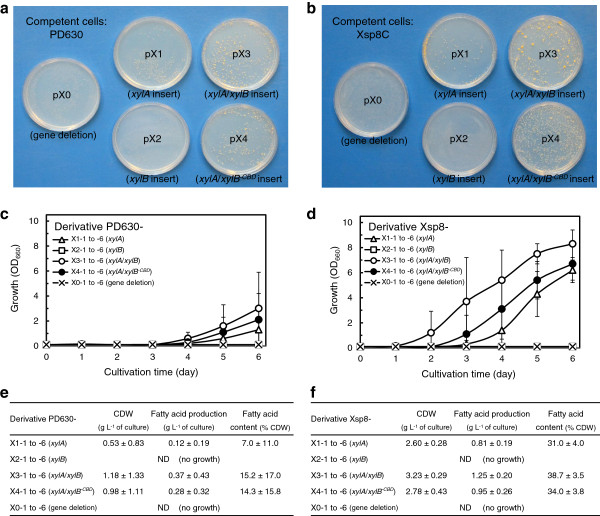Figure 6.
Elucidation of the molecular targets involved in improving xylose metabolism in R. opacus PD630. (a,b) Colonies arising from transformation of various plasmids (pX0 which carries no gene, pX1 which carries xylA alone, pX2 which carries xylB alone, pX3 which carries xylA and xylB, and pX4 which carried xylA and xylB without cellulose-binding domain) into R. opacus competent cells. Each plasmid was electroporated into the competent cells of wt PD630 (a) or pXsp8-plasmid cured Xsp8C (b). The pulsed cells were plated onto defined medium containing 16 g L-1 xylose, 1 g L-1 (NH4)2SO4 and spectinomycin, and incubated for 14 days. (c-f) Fermentation kinetics of R. opacus derivatives. Each strain was inoculated in defined medium containing 16 g L-1 xylose, 1 g L-1 (NH4)2SO4 and spectinomycin at an initial OD660 of 0.1 in flask cultures. (c,d) Growth kinetics of PD630 derivatives (c) and Xsp8 derivatives (d). (e,f) TAG production of PD630 derivatives (e) and Xsp8 derivatives (f) after 6 days of cultivation. Data represent the mean and s.d. of the six strains (n=1).

